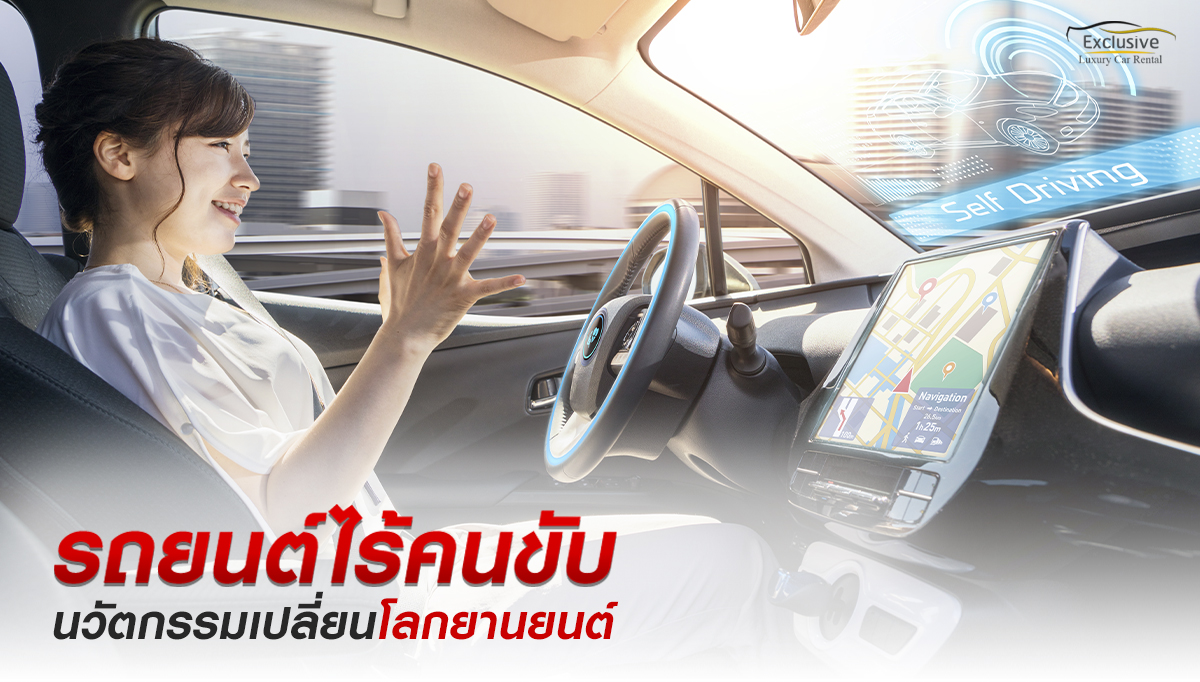Driverless cars, innovations that change the automotive world
Who knows about self-driving cars? I believe that few people know about cars that do not need a human controller because they are not yet widespread at present. It is an Artificial Intelligence (AI) technology that commands our cars to drive themselves without the need for a driver. Currently, Artificial Intelligence (AI) technology plays an increasingly important role in various aspects of human life, whether it is industry, finance, or even vehicles. All of them use AI systems to help analyze to create automatic systems. Automatic systems have many advantages, both reducing dependence on humans in use and high accuracy. However, automatic systems must learn various functions in order for the automatic system to be as complete as possible. Let's take a look at what self-driving car technologies are and what are their advantages and disadvantages.
Driverless car technology
The technology used in self-driving cars will consist of 4 main parts:
1. Computer Vision
It is like the eyes of a car that allow the car to perceive various environments. The technologies used are 360-degree cameras, sonar, laser light, and radar.
2. Deep-Learning
It is the heart of a driverless car that will use artificial intelligence technology to learn and analyze road conditions, including decision-making when various events occur, such as slowing down when the car in front slows down or accelerates, controlling the car to stay in the lane, checking traffic signs and traffic lights, and many more.
3. Robotic
It is the part that receives the processed commands to convert them into electrical signals and then command or control the car to follow the program's needs.
4. Navigation
It is a satellite navigation system that will be a part of analyzing routes or traffic conditions to process and determine the direction for the car. This system must be accurate and precise.
The operation of self-driving cars will require high-performance computer vision and navigation systems to receive data to analyze various environments and then process it at the central processing unit (Deep Learning), which must have high performance because in analyzing various situations, the analysis time must be as little as possible in order to send commands to the vehicle control system (Robotic) with precision so that self-driving cars can work most efficiently.
Levels of driverless cars
Currently, there are 6 levels of driverless cars:
Level 0 is a car that humans must control everything by themselves, from steering, braking, starting the engine, which is the current car.
Level 1 is most cars are still controlled by humans, but some functions are automatic, such as steering or accelerating.
Level 2 is steering or accelerating in any way that is done by the automatic system, which will make the driver not have to use both arms and legs at the same time, such as the Cruise Control system.
Level 3 is a car that drives itself automatically, but must have a driver to monitor and intervene in an emergency or when high safety is required.
Level 4 is a fully autonomous car, but can only drive in the conditions for which it was designed.
Level 5 is a self-driving car that has driving capabilities comparable to humans.
A company that produces self-driving cars
Currently, there are many companies that produce driverless cars on the automobile market, whether they are companies that already produce cars such as Tesla, BMW, Volvo, General Motors, Hyundai, Toyota, Nissan, Honda, or IT giants like Google, which also have their own self-driving cars. Although driverless cars have currently been tested on millions of kilometers of real roads, the systems still need time to learn in order to make the self-driving cars as stable as possible. For example, Tesla's cars have released self-driving cars for users to use, such as the Tesla Model X and Tesla Model S. Although Tesla's cars are not 100% driverless cars, they are semi-autonomous cars or the Autopilot system, which mainly relies on humans to control the steering wheel. While Google itself has developed a 100% self-driving car (Self Driving Car) that passengers can drive by themselves with just a button. Google started this project in 2009. To date, Google has tested 100% driverless cars on American roads for more than 1.7 million miles over a period of 6 years, with 11 minor accidents that were not fatal.
Advantages of driverless cars
1. Self-driving cars make drivers more comfortable.
On a long journey, it is natural for people to get tired. How great would it be if there was an autonomous driving system that allowed us to take a nap to relieve fatigue while driving, especially during traffic jams where speeding is not too high, reducing accidents caused by driver fatigue.
2. There is more safety on the road.
Just imagine if all cars were self-driving cars. Accidents would be greatly reduced because all cars have sensors, all-round cameras, and use appropriate speeds. Accidents caused by cutting in front, tailgating, or falling asleep would not occur, which would increase safety even more.
Disadvantages of driverless cars
1. Problems from unclear traffic signs
Self-driving cars need sensors to read various traffic signs. However, if the traffic signs are damaged or unclear, the car's brain may make incorrect decisions.
2. Road surface problems In real life
Sometimes we encounter uneven roads with potholes, which may prevent the sensors of self-driving cars from recognizing potholes on the road, causing the car to fall into a pothole at a high height, which may cause an accident.
3. Problems with driving by other cars
Of course, if all cars on the road were self-driving cars, this problem would definitely not occur. But in reality, there are very few people using self-driving cars right now. Sometimes, the driving behavior of other cars can cause mistakes or accidents in the self-driving car, such as cutting in front, tailgating, or even driving against traffic. The self-driving car may make incorrect decisions.
4. Price Although self-driving cars
Currently a technology that will inevitably play a role in our lives in the future, the current problem is that the price of self-driving cars is quite high, making it almost impossible for the average person to buy a self-driving car. For example, the price of the Tesla Model S, a self-driving car, in Thailand is 6.5 million baht, which is considered very high for the average person. But in the future, the price of self-driving cars is likely to decrease, making them more accessible to the general public if the government provides support.
Preparing for self-driving cars in Thailand
1. The potential of self-driving cars in Thailand
Most countries that are ready to use self-driving cars are developed countries that are more prepared than Thailand. We can see that self-driving cars consist of many sensors that help analyze the surrounding situation. For Thailand, if we talk about self-driving cars, it is considered very new. But we cannot deny this technology. We must therefore be prepared to keep up with this technology.
2. Environmental readiness
Of course, self-driving cars must run on roads with different characteristics in each area, including driving on imperfect road conditions and unclear traffic signs, as well as other environments such as pets on the road, motorcyclists. This type of environment may prevent self-driving cars from working efficiently and lead to accidents.
3. Legal readiness
Of course, self-driving cars must be considered in order to have supporting laws when various incidents occur. For example, if a self-driving car has an accident one day, in law, the person responsible must be the owner of the car or the car manufacturer, etc.
Advantages of driverless cars for Thailand
At present, Thailand has the second highest accident rate in the world, second only to Namibia. Thailand has accident fatalities of 44 people per 100,000 population per year. But what is worrisome is when Thai people hear news about accidents in that country, it is considered normal because they think it is a distant matter. But if compared to statistics around the world, it can be seen that Thailand has a very high accident rate. We should start to be aware of accidents that may happen to us or people close to us.
The impact of driverless cars on Thailand
Of course, if self-driving cars start to play a greater role in Thailand, many occupations will definitely be affected by this technology, whether it's truck drivers, taxi drivers, or parcel delivery drivers. These occupations are all primarily related to using cars. In the future, self-driving cars will definitely replace these occupations, causing people in these occupations to have to adapt to this technology.
And this is all about self-driving cars presented here. Interesting, right? And for anyone who doesn't want to drive themselves but doesn't have a self-driving car, you can use the Rent a luxury car with a driver service with Exclusive. There is a service to drive to your destination. Our driver will drive to various places for us throughout Thailand. Fill the gas tank full, so we can sit back and relax. It's a warm-up before there are self-driving cars in the future. No more tired driving.









